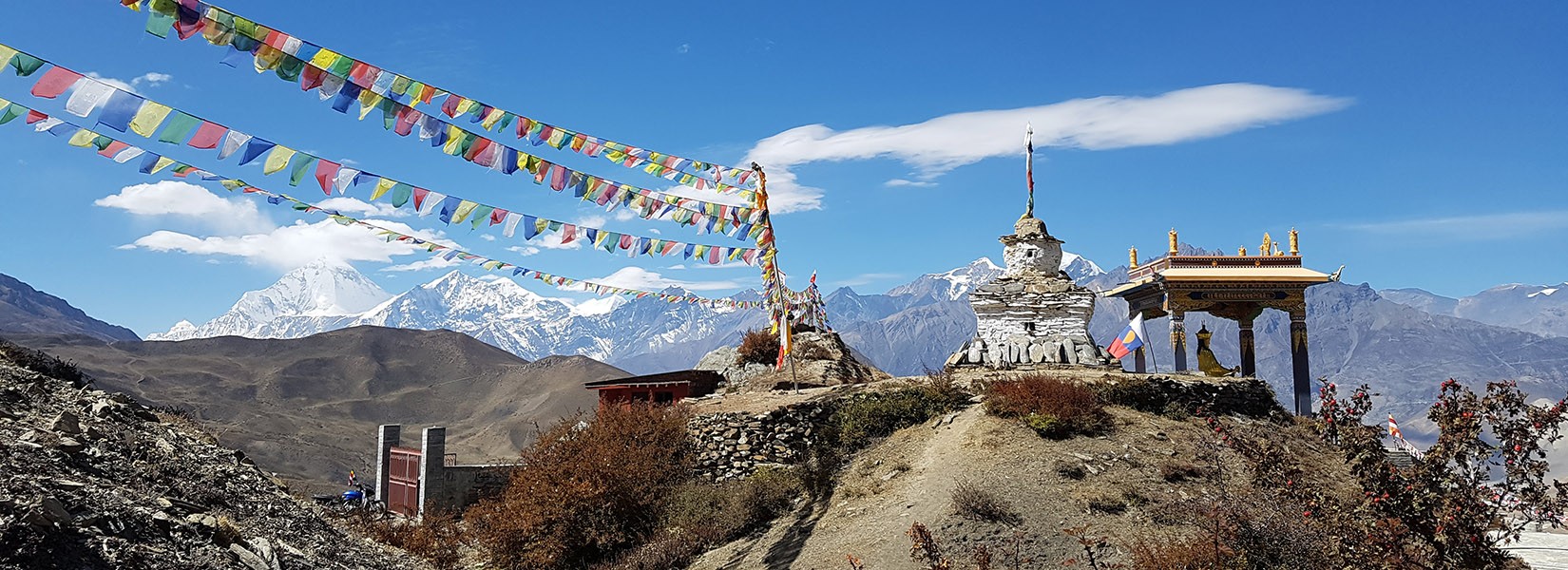Best Seasons: March–May (spring) and September–November (autumn) offer clear skies, pleasant weather, and stunning mountain views.
Altitude Sickness: The trek reaches a maximum of 3,710 m / 12,172 ft at Muktinath, so the risk is low compared to higher treks, but it’s still wise to acclimatize properly and stay hydrated.
Physical Fitness: This is a moderate trek, suitable for beginners with average fitness levels. Daily hikes range from 4–6 hours with gradual ascents and descents.
Connectivity: Wi-Fi and mobile network coverage are available in most villages, though not always reliable. Carry a local SIM card (NTC or Ncell) for better coverage.
Money Matters: Carry enough cash (Nepali Rupees) before leaving Pokhara, as ATMs are not available in Jomsom or higher villages.
Cultural Etiquette: Respect local customs—ask before taking photographs of people or religious sites, and walk clockwise around stupas and monasteries.
Packing Tip: Since Jomsom is famous for its strong winds, especially in the afternoon, pack a windproof jacket.
Travel Insurance: Always ensure you have trekking insurance that covers medical evacuation up to at least 4,000 m.
Frequently Asked Questions (FAQs)
1. How difficult is the Jomsom Muktinath Trek?
This trek is considered moderate and is suitable for beginners. Daily hikes last 4–6 hours on well-established trails, with a maximum elevation of 3,710 m (12,172 ft).
2. What kind of accommodation is available?
You will stay in teahouses/lodges during the trek, which offer simple rooms with shared bathrooms, basic bedding, and hot meals. In Kathmandu and Pokhara, you will stay in standard tourist hotels.
3. Is altitude sickness a concern?
The highest point is Muktinath (3,710 m), which is relatively safe compared to higher treks. Proper pacing, hydration, and rest days help minimize any risk.
4. What is the best time for this trek?
The best seasons are spring (March–May) and autumn (September–November) for clear skies and comfortable temperatures. Winter (December–February) is possible but cold, and summer/monsoon (June–August) can bring rain in Pokhara though Mustang remains relatively dry.
5. Can I do this trek solo?
Yes, solo trekking is possible, but hiring a guide and porter is highly recommended for safety, navigation, and cultural insights.
6. How do I get to Jomsom?
Most trekkers take a short 25-minute flight from Pokhara to Jomsom. Alternatively, it’s possible to drive, though the road is long and bumpy.
7. Do I need permits for this trek?
Yes, you will need the Annapurna Conservation Area Permit (ACAP) and TIMS Card, both of which are included in our package.
8. What should I pack for the trek?
Pack light but include essentials like a windproof jacket, trekking boots, layered clothing, sleeping bag, and water purification tablets. A full packing list is provided above.


